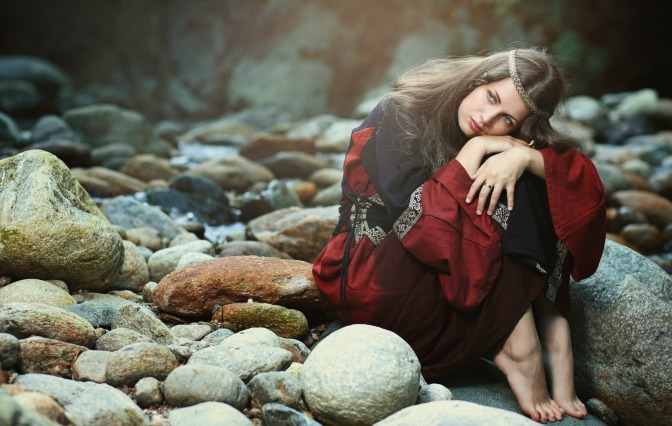Growing up, your parents probably only bought you shampoo and conditioner for your hair. Once you hit your teen years, though, you realized that having luscious locks required more than just a comb and a blow-dryer. Suddenly, it seemed that you needed every hair product under the sun to sculpt a hairstyle that’s supposed to look effortless. In times when even owning various pomades, mousses, sprays, leave-in conditioners, and sea-salt sprays are still not enough, you’re probably wishing to go back to simpler times.
But the most popular hairstyles in history are never easy to achieve. Think today’s hairstyles are high maintenance? Have you seen Marie Antoinette’s voluminous ‘do? Here’s our list of the 6 most over-the-top historical hairstyles—after this you’ll never complain about your hair routine again!
1. Imperial Rome

The complicated hairstyles of the female elite became so elaborate that they would require attention from several slaves to maintain their curls and locks throughout the day. Since the bleaching agents resulted in hair loss, many resorted to using their fair-haired slaves’ manes as fashionable wigs. Those with riches in excess would actually sprinkle gold dust onto their head to give them the blonde look!
2. The Elizabethan Era
If this queen was important enough to have an entire era named after her, it’s no surprise that she provided hair-spiration for women throughout England. With her reddish-gold locks, women (and men!) dyed their hair auburn to match hers in a show of loyalty. In the quest for flaming red locks, many aristocratic men and women would dye their hair with a variety of chemicals and ingredient—some of which took a toll on their health. Combinations of sulfuric acid, saltpeter, saffron, and quicklime applied to hair often left their hosts feeling nauseated and induced many headaches and nosebleeds. Thankfully, nowadays we have much healthier and human-safe dyes that can give us flaming red locks without the side effects!
3. The Middle Ages
In the Middle Ages, women sported long hair—we’re talking long, like past the knees! At the time, having a high forehead was desirable. Since this was before the days of plastic surgery, medieval women used to other means to create the illusion of a bigger forehead. The noblewomen would pluck or shave off the hairs around their temples and around the napes of their necks.

With their foreheads smooth as silk, they would decorate them with pearls, precious stones, ribbons, and veils. Veils were worn by married women since their hair was legally owned by their husbands. Imagine not owning the hair on top of your own head—the Middle Ages really were dark times!
4. 19th Century Buenos Aires
Since we’re focusing on hairstyles and not just cuts, we can’t leave out the giant peinetones. These giant combs spanned up to three feet in width and only the most fashionable (and wealthy) of women would rock these. Made from the shells of tortoises captured in the Caribbean Sea, artisans crafted these combs into innovative designs and often added additional materials such as silver or bone for some pizzazz. If you thought that balancing a comb the size of a small child on top of your head was insane…you’re right—it wasn’t a fact that went unnoticed. Artists would poke fun at women by producing lithographs depicting women whose combs were so large that they couldn’t fit through doors! Hey, go big or go home, right?
5. The ‘60s

When you think the ‘60s you’re probably picturing the wacky ‘dos donned by the Hairspray cast. You’re not wrong!
This was the era when the beehive took residency. The taller, more ridiculous sister of the bouffant, only the most ambitious of ladies would pull this look off. Armed with juice-can rollers (regular rollers weren’t big enough!), a ton of hairspray, and the arm strength to continually backcomb the hair to new heights, this hairstyle wasn’t sported by the weak!
The conditions for this particular ‘do required bearers to not wash their hair for weeks and had to sleep with nightcaps so as to not disturb the hive.
6. Mid-18th Century
While Pompadours still exist in varying degrees today (think Elvis and David Bowie), they saw their heyday in the mid-18th century. In those times, the bigger the hair the better. Those who didn’t don white powdered wigs with long ringlets opted for the exaggerated poofs of the Pompadour style.
Women would using padding (known as ‘rats’ )to add volume to their hair. Then they would comb their natural locks over the rats, creating a pouf above the forehead that was large and in charge. Rats were collections of human or horse hair gathered from combs to add volume to hair. Because these hair styles were so elaborate, they would only be redone every couple of weeks. Sanitation became an issue as vermin saw these styles as nesting ground. Yikes!
